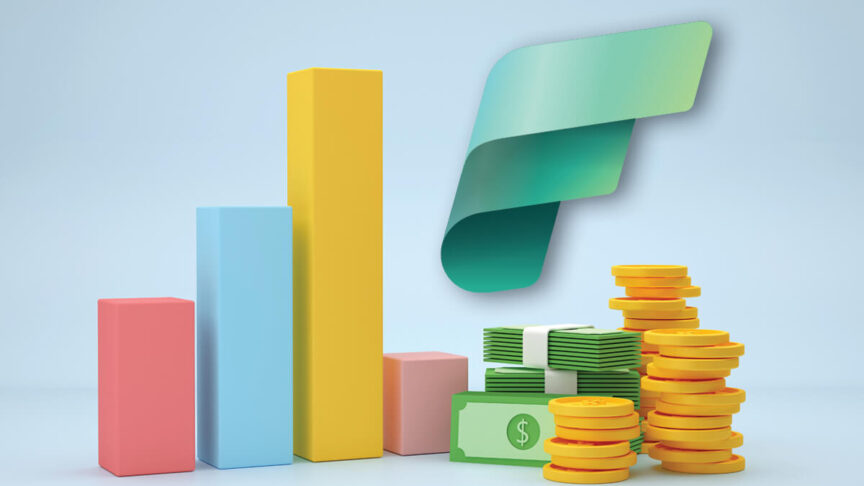
Let’s face it: Microsoft’s data ecosystem is evolving fast—and if you’re trying to make sense of it all, you’re not alone. Between Azure, Synapse, Fabric, and Power BI, it’s easy to get stuck wondering where one ends and the next begins and what you really need. Are Fabric and Synapse competing tools? Is Power BI still standalone or now just part of Fabric? And what does all this mean to me?
These questions keep popping up across industries as IT leaders, analysts, and architects take stock of their analytics stack. The stakes are high: making the wrong move can lead to costly rework but getting it right can put your organization ahead of the curve. So let’s unpack what Microsoft is really offering, how these technologies connect, and how to decide what’s right for your data stack.
It All Runs on Azure
At the heart of Microsoft’s cloud ecosystem lies Azure—a robust platform offering Infrastructure as a Service (IaaS), Platform as a Service (PaaS), and a host of services for everything from application development to machine learning. When it comes to data, Azure’s standout component has long been Azure Synapse Analytics.
Azure Synapse is tailored for organizations requiring a flexible, high-performance data warehousing solution. It integrates big data and analytics, so you can query both structured and unstructured data at scale, often utilizing SQL and Spark engines. This makes it ideal for teams with strong data engineering capabilities who need granular control over pipelines, transformations, and security architectures.
Fabric is the Newcomer
Microsoft Fabric, on the other hand, is a newer player in the game. Where Azure’s toolkit (which is really a collection of services that you assemble), Fabric is a unified software-as-a-service (SaaS) platform that brings together core analytics tools like Synapse, Power BI, and Data Factory into a single, cohesive experience. While Fabric integrates these services, it doesn’t render existing tools obsolete.
Think of Fabric as Microsoft’s answer to the complexity challenge. It’s built for speed, simplicity, and end-to-end visibility. With Fabric, organizations get a pre-integrated data estate where ingestion, transformation, analytics, governance, and reporting all happen in one place. And it’s all built on top of Azure, so you’re still getting enterprise-grade performance and security—but with less engineering overhead.
TIP: For a deeper dive, check out our recent blog, “Getting Started with Microsoft Fabric: A Beginner’s Step-by-Step Guide” from JourneyTeam’s data experts. We also recently published an informative, fact-based article: “How to Estimate Microsoft Fabric Costs: Capacity Planning Strategies for AI Workloads.” Be sure to peruse that to answer the question: What is Fabric going to cost me?
Power BI: The Visualization Layer
Power BI has long been Microsoft’s go-to business intelligence tool, celebrated for its intuitive dashboards and visualization capabilities. With the advent of Fabric, Power BI steps into a bigger role as the visualization layer for the entire platform.
Fabric and Azure: A Smart Combination
It’s essential to understand that Fabric doesn’t replace Azure; it builds upon it. Fabric operates on Azure infrastructure, serving as a layer that simplifies data interaction. Think of Azure as the foundation and Fabric as the refined interface tailored for business users, analysts, and data stewards.
In practice, your data can reside in Azure (e.g., Blob Storage, ADLS Gen2), with Fabric overlaying it to facilitate processing, analysis, and visualization with minimal technical effort. Since Power BI is now native to Fabric, you can access live insights from the same platform that data engineers use for pipelines and transformations.
Fabric vs. Azure Synapse: Which Should You Use?
The decision between Fabric and Synapse hinges on your organization’s specific use cases and technical maturity.
- Azure Synapse: Ideal for organizations with experienced data engineering teams, complex custom pipelines, and a need for detailed control over data processing. If your team is heavily invested in Azure or handles intensive analytical workloads (such as extensive financial models or IoT-scale telemetry data), Synapse remains a strong choice.
- Microsoft Fabric: Suited for organizations aiming to modernize swiftly, streamline reporting, or unify siloed analytics without significant DevOps demands. It’s particularly beneficial for midsize businesses or enterprise departments seeking centralized governance without deep engineering involvement.
- Combined Approach: Often, the optimal strategy isn’t choosing one over the other but leveraging both. Fabric can coexist with Synapse, especially as organizations transition to a SaaS-based analytics model while maintaining core Azure investments.
Simplifying the Decision
Lean into Fabric if your goal is to unify reporting, accelerate insights, and reduce complexity. It’s excellent for agile teams, business analysts, and organizations who want centralized governance without extensive engineering requirements.
Stick with Synapse if you require custom processing, advanced machine learning integration, or already have mature pipelines within Azure.
Use Both if you’re on a modernization path needing to support legacy workloads while adopting a streamlined model for new initiatives.
Worth Noting: While Fabric is positioned as the successor to Synapse, there’s no automatic upgrade path. Significant investments in Synapse may present migration challenges due to architectural and functional differences.
An Easy Decision Matrix
| Use Case | Best for Fabric | Best for Synapse | Use Both |
| Business Size | Mid-size or departmental teams | Large enterprises with custom needs | Organizations transitioning gradually |
| Technical Maturity | Low to medium | High (with data engineering teams) | Mixed maturity levels across departments |
| Goal | Fast-track modernization, simplified governance | Custom processing, advanced modeling | Phased modernization with legacy support |
| Infrastructure | New cloud-native environments | Established Azure environments | Blending legacy and modern cloud tools |
| Analytics Needs | Self-service BI, governed data sharing | Complex ETL/ELT, real-time analytics | Cross-functional reporting and deep analytics |
How JourneyTeam Can Help
This is where JourneyTeam comes in. As a Microsoft Partner of the Year for Business Applications, we’ve helped dozens of organizations navigate the Microsoft data landscape—from full Azure implementations to Fabric transitions.
We can help you:
- Evaluate your current data environment and determine what platform mix makes sense.
- Migrate to Microsoft Fabric, ensuring your existing datasets, models, and reports are optimized.
- Create a Power BI strategy that works within your business context, whether standalone or integrated with Fabric.
- Support Synapse-to-Fabric transitions, including hybrid environments that let you leverage the best of both.
Whether you’re starting from spreadsheets or already deep into Azure, we’ll help you build a future-ready analytics strategy that drives real business results—not just technical progress.


